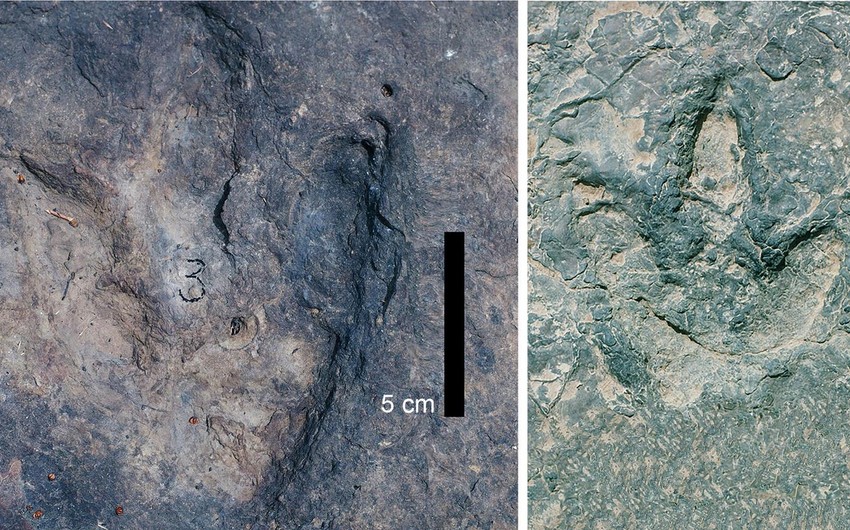An international team of researchers led by SMU paleontologist Louis L. Jacobs has found matching sets of Early Cretaceous dinosaur footprints on what are now two different continents, Report informs referring to Phys.org.
More than 260 footprints were discovered in Brazil and in Cameroon, showing where land-dwelling dinosaurs were last able to freely cross between South America and Africa millions of years ago before the two continents split apart.
"We determined that in terms of age, these footprints were similar," Jacobs said. "In their geological and plate tectonic contexts, they were also similar. In terms of their shapes, they are almost identical."
The footprints, impressed into mud and silt along ancient rivers and lakes, were found more than 3,700 miles, or 6,000 kilometers, away from each other. Dinosaurs made the tracks 120 million years ago on a single supercontinent known as Gondwana—which broke off from the larger landmass of Pangea, Jacobs said.
"One of the youngest and narrowest geological connections between Africa and South America was the elbow of northeastern Brazil nestled against what is now the coast of Cameroon along the Gulf of Guinea," Jacobs explained. "The two continents were continuous along that narrow stretch, so that animals on either side of that connection could potentially move across it."
Most of the dinosaur fossils were created by three-toed theropod dinosaurs. A few were also likely made by sauropods or ornithischians, said Diana P. Vineyard, who is a research associate at SMU and co-author of the study.
Other co-authors of the study were Lawrence J. Flynn in the Department of Human Evolutionary Biology at Harvard University, Christopher R. Scotese in the Department of Earth and Planetary Sciences at Northwestern University and Ismar de Souza Carvalho at the Universidade Federal do Rio de Janeiro and Centro de Geociências.
The study was published by New Mexico Museum of Natural History & Science in a tribute to the late paleontologist Martin Lockley, who spent much of his career studying dinosaur tracks and footprints.


 https://static.report.az/photo/2744fefd-f037-37dc-b15c-a150e514dcb0.jpg
https://static.report.az/photo/2744fefd-f037-37dc-b15c-a150e514dcb0.jpg

